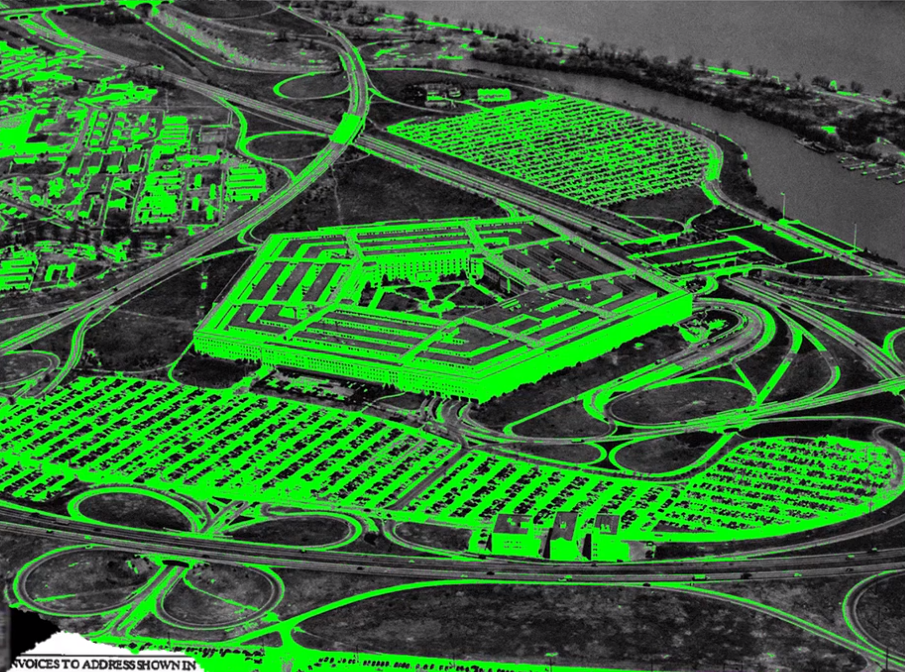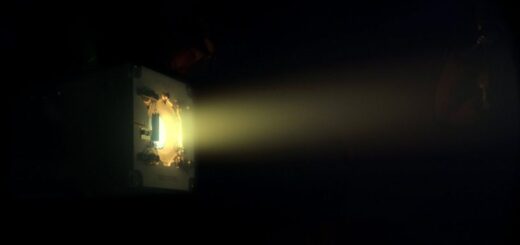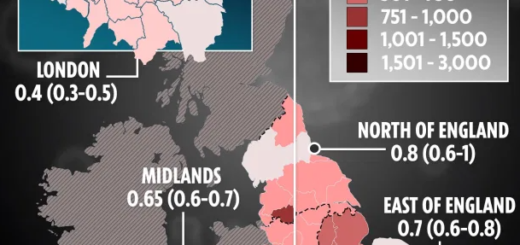Will The New York Times Ever Stop Reporting on UFOs?

IN DECEMBER 2017, The New York Times published a front page story about a ”shadowy” UFO Pentagon program that investigated encounters between Navy fighter pilots and mysterious, gravity-defying objects. Illustrated with several grainy cockpit videos posted to the Times’ website, the scoop was captivating. ABC News called it a “bombshell.” Brett Baier of Fox News said, “a lot of people are taking this revelation seriously.”
A lot of journalists, that is. Many news consumers did lap up the story like a new X-Files episode but nobody ran for the hills, and nobody in Congress called for hearings about the “revelation” and its seemingly huge implications for civilization. As one observer on Twitter noted: “I mean the New York Times literally just gave us proof of UFOs and the world didn’t skip a beat.”
That’s because the world didn’t believe there was much to the story—or, at least, the world didn’t believe what the newspaper was hinting at. Indeed, the evidence touted by the Times (such as a supposedly recovered piece of unearthly wreckage) was shredded pretty easily by writers at New York magazine, Scientific American and WIRED. Yes, several Navy pilots had seen a whitish, oval object hover over the ocean before darting away; but no, that didn’t mean it was an alien aircraft, as the main source for the scoop seemed to imply on CNN. But the Times has stayed on the beat. Over the last few years, the paper has published more than a dozen UFO-related stories; the most recent one arriving in Friday’s paper.
SUBSCRIBE
Image may contain Rug
Subscribe to WIRED and stay smart with more of your favorite Ideas writers.
The latest installment documents other “close encounters” between Navy pilots and “unidentified aerial vehicles” that date back to 2013 and 2014. The takeaway from this story and the others has been unmistakable: Some kind of unknown, super-advanced form of aviation technology is encroaching on US military air space and outmaneuvering top-gun pilots. If true, this would appear to expose an alarming national defense vulnerability.
And yet there is not a peep, in all this sensational reporting, from concerned military brass; and nary a call for further investigation from national security wonks. You can search the credentialed defense-industry press, which covers every Pentagon policy, procurement and turf battle in minute detail, and be hard-pressed to find any mention of wily UFOs that have been menacing Naval aviators. But that’s the story coming out of the paper of record for almost three years now. It’s a curious narrative that appears to be driven by thinly-sourced and slanted reporting. Cursory attention has been given to the most likely, prosaic explanations. Instead, the coverage has, for the most part, taken a quizzical, mysterious frame that plays off the catchy “UFO” tag in the headline.
Memorial Day Sale.
Don’t miss the future. Get 1 year for $10 $5.
Subscribe Now
Friday’s story is a minimalist affair, drawn largely from a set of newly-released Navy reports that were first written up by a military blogger earlier in the week. The Times piece includes no quotes from the pilots, and no quotes from officials at the Department of Defense or any other branch of the armed services who could have spoken to the incidents. There is also no input from aerospace or aviation experts who might be able to place those “close encounters” into a more informed context. Here, I’m referring specifically to an issue of rising concern among those in the US military and civil aviation industry: The proliferation of commercial and private drones over the last decade.
That concern is well-documented and has been amply covered elsewhere in the media. “Rogue toy drones are interfering with military operations,” reads one 2015 Washington Post headline. Indeed, the problem has been taken up by think tanks and in Congress; and it was acted on by the FAA in 2017—the same year the Times set off the latest iteration of the UFO craze. Also in 2017, the Pentagon gave the military permission to shoot down unauthorized drones flying in restricted US airspace.
Most Popular
Scientologist Tom Cruise in a tuxedo
CULTURE
Tom Cruise Is Making a Movie in Space With SpaceX and NASA
ANGELA WATERCUTTER
a duck whispering in another duck’s ear
SECURITY
Now’s The Perfect Time to Start Using a Password Manager
ALAN HENRY
Trump speaking
BUSINESS
Twitter Finally Fact-Checked Trump. It’s a Bit of a Mess
GILAD EDELMAN
5g cell tower
SECURITY
The DHS Prepares for Attacks Fueled by 5G Conspiracy Theories
JON BRODKIN, ARS TECHNICA
The new Times report does not contain a whiff of this important background. Rather, it once again refers to “a little-known Pentagon program that for years looked into reports of unidentified flying objects, the Advanced Aerospace Threat Identification Program;” noting also that “the existence of the office was reported by The Times in 2017.”
That would be the same one described in the paper’s original scoop. It’s interesting that the Times, in this week’s piece, neither quotes nor even mentions former military intelligence officer Luis Elizondo, who was said to have run that Pentagon program from “deep within the building’s maze,” per the 2017 story; and who then went on to be interviewed widely by other outlets. Consider a similar Times story from a year ago that also chronicled Navy pilots’ encounters with “strange objects” that purportedly moved at “hypersonic speeds” and “appeared almost daily from the summer of 2014 to March 2015.” In that piece, Elizondo is cited authoritatively as the “military intelligence official” who had run the Pentagon’s UFO program and is quoted as describing the latest Navy reports as a “striking series of incidents.” The timing of this splashy story from May 2019 was apparently fortuitous: A new History Channel series featuring Elizondo as the Pentagon’s former UFO hunter had just begun.
To understand the Times’ sustained interest in UFOs requires an appreciation of Elizondo’s central role in its coverage. His willingness to resign from the Pentagon in 2017 and then reveal the existence and details of the UFO program he’d purportedly run, supplied the gravitas at the center of the initial Times account. Without him, it’s likely the story would not have gotten so much traction.
It’s certainly odd that a story so few seem to take seriously keeps landing in the headlines, especially at this juncture.
There’s just one problem. As I reported last year, “There is no discernible evidence that he [Elizondo] ever worked for a government UFO program, much less led one.” Perhaps that’s why the latest flying-saucer story in the Times doesn’t mention him at all; while the one that came out last month makes no claims about the nature of his prior work for the Pentagon. There he is described instead as the “director of government programs” for a private company that “collects and researches” documents related to UFOs. This same company happens to have been heavily involved in the production of last year’s History channel series.
Does any of this really matter? It’s certainly odd that a story so few seem to take seriously keeps landing in the headlines, especially at this juncture. Elizondo, too, has lingered in the news. The Times may have moved on, but cable news shows still find him irresistible. In appearances last year with Tucker Carlson, Elizondo said that he and the private company that now employs him were studying pieces of a possible extraterrestrial craft. Elizondo also told Carlson that he believed the US government was in possession of an actual UFO. That’s an outdated tale from the flying saucer annals, but hey, maybe Elizondo will be able to breathe some life back into it. The fact that The New York Times keeps posting new reports about the Navy pilots and their UFOs can only help him in that cause.



 Creators of mankind
Creators of mankind Description of “Tall white aliens”
Description of “Tall white aliens” Where they came from?
Where they came from? About hostile civilizations
About hostile civilizations The war for the Earth
The war for the Earth “Tall white aliens” about eternal life
“Tall white aliens” about eternal life Video: “Nordic aliens”
Video: “Nordic aliens” Aliens
Aliens Alien encounters
Alien encounters The aliens base
The aliens base UFO
UFO Technology UFO
Technology UFO Underground civilization
Underground civilization Ancient alien artifacts
Ancient alien artifacts Military and UFO
Military and UFO Mysteries and hypotheses
Mysteries and hypotheses Scientific facts
Scientific facts


















